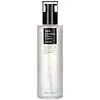What's inside
What's inside
 Key Ingredients
Key Ingredients

 Benefits
Benefits

 Concerns
Concerns

 Ingredients Side-by-side
Ingredients Side-by-side

Water
Skin ConditioningPropanediol
SolventSalicylic Acid
MaskingNiacinamide
SmoothingCollagen Amino Acids
MoisturisingParachlorella Beijerinckii Exopolysaccharides
Skin ProtectingHydrolyzed Collagen
EmollientAzelaic Acid
BufferingGlycolic Acid
BufferingDecyl Glucoside
CleansingEucalyptus Globulus Leaf Extract
PerfumingLauryl Glucoside
CleansingRosmarinus Officinalis Extract
AntimicrobialMentha Piperita Extract
CleansingCitrus Limon Fruit Extract
MaskingDextrin
AbsorbentAmylopectin
Leuconostoc/Radish Root Ferment Filtrate
AntimicrobialTocopherol
AntioxidantEthylhexylglycerin
Skin ConditioningSodium Hydroxide
BufferingPhytic Acid
Butylene Glycol
HumectantCitric Acid
BufferingSodium Benzoate
MaskingPotassium Sorbate
PreservativePhenoxyethanol
PreservativeWater, Propanediol, Salicylic Acid, Niacinamide, Collagen Amino Acids, Parachlorella Beijerinckii Exopolysaccharides, Hydrolyzed Collagen, Azelaic Acid, Glycolic Acid, Decyl Glucoside, Eucalyptus Globulus Leaf Extract, Lauryl Glucoside, Rosmarinus Officinalis Extract, Mentha Piperita Extract, Citrus Limon Fruit Extract, Dextrin, Amylopectin, Leuconostoc/Radish Root Ferment Filtrate, Tocopherol, Ethylhexylglycerin, Sodium Hydroxide, Phytic Acid, Butylene Glycol, Citric Acid, Sodium Benzoate, Potassium Sorbate, Phenoxyethanol
 Reviews
Reviews

Ingredients Explained
These ingredients are found in both products.
Ingredients higher up in an ingredient list are typically present in a larger amount.
Butylene Glycol (or BG) is used within cosmetic products for a few different reasons:
Overall, Butylene Glycol is a safe and well-rounded ingredient that works well with other ingredients.
Though this ingredient works well with most skin types, some people with sensitive skin may experience a reaction such as allergic rashes, closed comedones, or itchiness.
Learn more about Butylene GlycolNiacinamide is a multitasking form of vitamin B3 that strengthens the skin barrier, reduces pores and dark spots, regulates oil, and improves signs of aging.
And the best part? It's gentle and well-tolerated by most skin types, including sensitive and reactive skin.
You might have heard of "niacin flush", or the reddening of skin that causes itchiness. Niacinamide has not been found to cause this.
In very rare cases, some individuals may not be able to tolerate niacinamide at all or experience an allergic reaction to it.
If you are experiencing flaking, irritation, and dryness with this ingredient, be sure to double check all your products as this ingredient can be found in all categories of skincare.
When incorporating niacinamide into your routine, look out for concentration amounts. Typically, 5% niacinamide provides benefits such as fading dark spots. However, if you have sensitive skin, it is better to begin with a smaller concentration.
When you apply niacinamide to your skin, your body converts it into nicotinamide adenine dinucleotide (NAD). NAD is an essential coenzyme that is already found in your cells as "fuel" and powers countless biological processes.
In your skin, NAD helps repair cell damage, produce new healthy cells, support collagen production, strengthen the skin barrier, and fight environmental stressors (like UV and pollution).
Our natural NAD levels start to decline with age, leading to slower skin repair, visible aging, and a weaker skin barrier. By providing your skin niacinamide, you're recharging your skin's NAD levels. This leads to stronger, healthier, and younger looking skin.
Another name for vitamin B3 is nicotinamide. This vitamin is water-soluble and our bodies don't store it. We obtain Vitamin B3 from either food or skincare. Meat, fish, wheat, yeast, and leafy greens contain vitamin B3.
The type of niacinamide used in skincare is synthetically created.
Learn more about Niacinamide